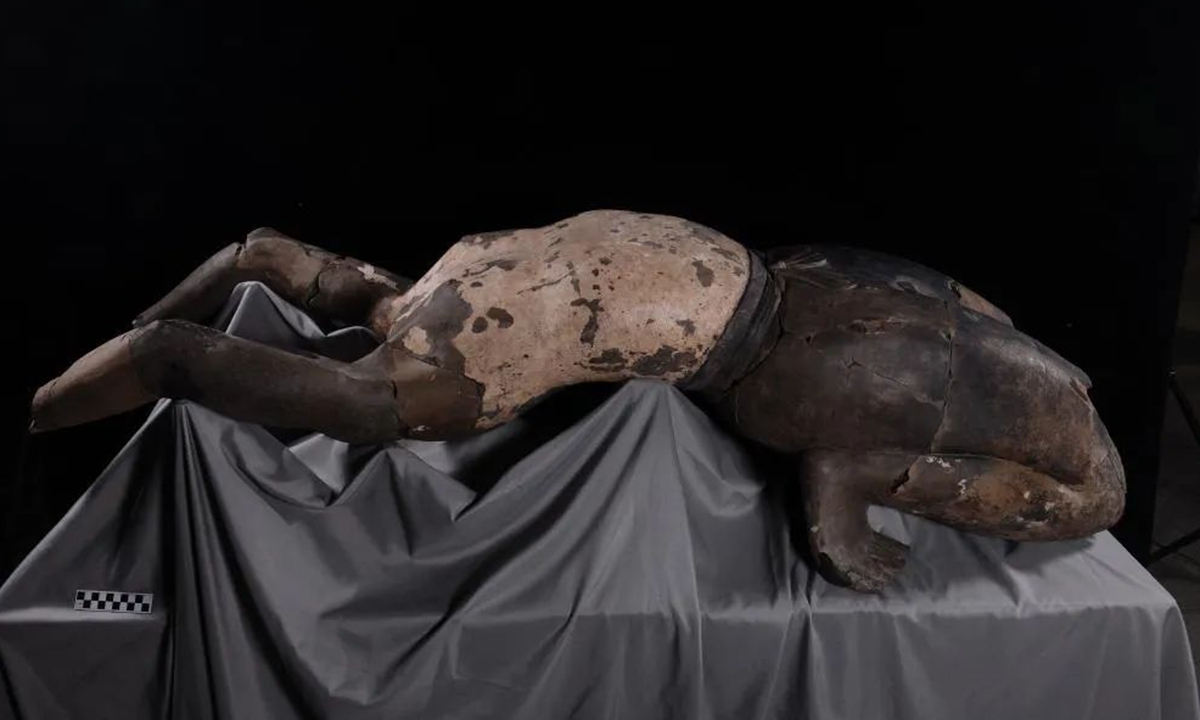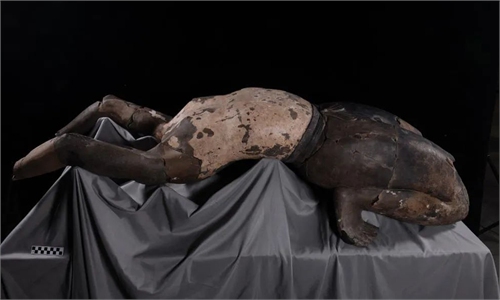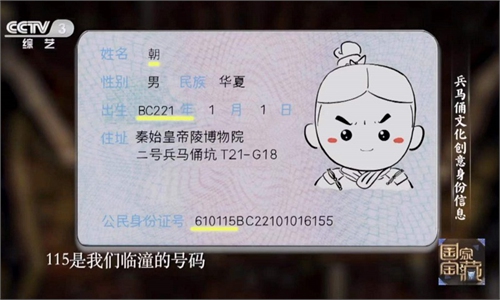2,000-year-old fingerprints found among Terracotta Warriors may have belonged to teen craftsman

Photo of figure "No.28" posing in a very unique position was released by the Emperor Qinshihuang Mausoleum Site Museum in Xi'an, Northwest China's Shaanxi Province. Photo:web
While most of the statues found among the world-famous Terracotta Warriors are soldiers or war horses, a terracotta statue of a figure twisted into a very strange pose, a Terracotta Acrobat, has aroused people's interest on Chinese social media recently. Now some new findings indicate that the statue may have been made by a teenaged craftsman.
On June 11, a photo of figure "No.28" was released by the Emperor Qinshihuang Mausoleum Site Museum in Xi'an, Northwest China's Shaanxi Province. Unlike other Terracotta Warrior statues found at the mausoleum, which are usually in a sitting or standing pose, "No.28" is kneeling on the ground and leaning backwards so its back touches the ground.
"After scanning and comparing fingerprints discovered on the figure, we found that they were highly similar to the fingerprints of a teenager," Zhou Ping, associate dean of the Emperor Qinshihuang Mausoleum Site Museum, told the Xinhua News Agency, after researchers found traces of three fingerprints on the belly part of the figure "No.28."
The statue was discovered in mausoleum pit "K9901," which was first discovered in 1999. Nearly 30 figures were found in the pit. To date, 25 of them, including the figurine No.28, have been restored.
It's worth noting that the statues unearthed from Pit K9901 are different from the warrior and horse statues found in other pits. Archaeologists speculate that the pottery figurines in this pit depict the entertainers who would have amused the imperial court during the Qin Dynasty (221BC-206BC), and so they named it the "Circus Figurine Pit."
Unlike other figures, these still retained their color.
"Based on what we found in the pit, this will be a great chance to recover the music and dances of the imperial palace during the Qin Dynasty," added Zhou.
No.28 was discovered in a severely damaged state. Through nine months of efforts, the 84 fragments that were discovered were pieced together, although the statue is still missing parts of its hands and head.
The repaired statue measures 154 centimeters in length and weighs 101 kilograms.
The museum staffers noted that they used resin adhesive to reinforce the broken sections between its belly and back, however a crack between the mid-body and lower body has not yet been set.
In addition, the restorers also found some unique marks on No.28 left by the craftsman during its production. For example, three fingerprints can clearly be seen on the surface of the statue, providing an important clue for current research.
The Emperor Qinshihuang Mausoleum archaeological site still has many statues that have yet to be unearthed. According to current estimates, when all excavations were completed, more than 6,000 pottery figurines and pottery horses would have been unearthed.
Global Times


